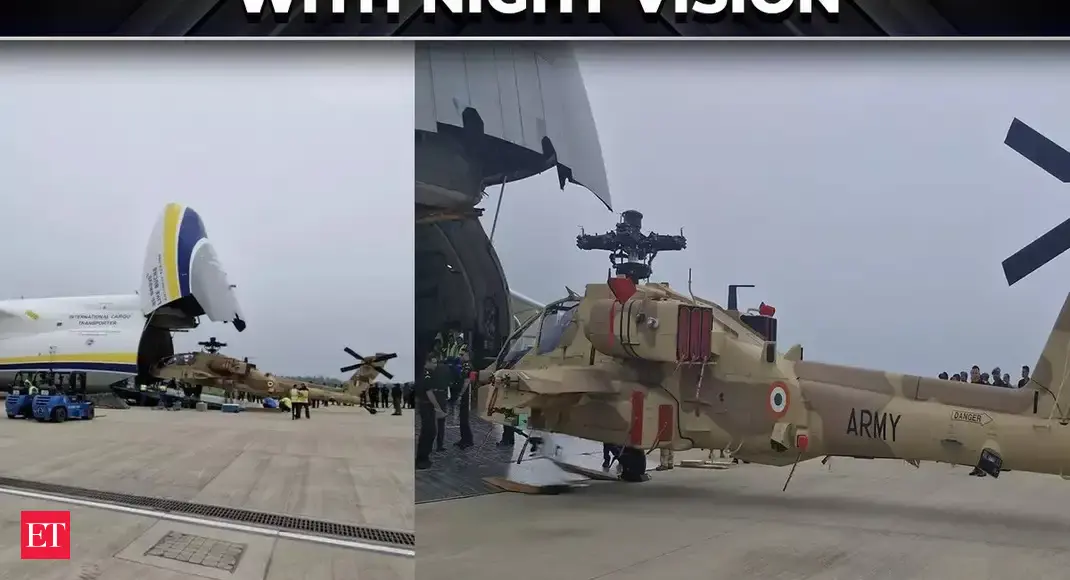

The Indian Army has formally inducted the first three AH-64E Apache attack helicopters from the United States on July 22, 2025, marking a significant upgrade to its combat aviation capabilities. The helicopters arrived at Hindon Air Force Station near Delhi and will be deployed in Jodhpur, Rajasthan with the Army Aviation Corps.
This induction is part of a $600 million deal signed in 2020 to acquire six Apaches specifically for the Army. The delivery was delayed by over 15 months due to global supply chain disruptions and shifting geopolitical conditions; they were originally scheduled to arrive between May and June 2024. The remaining three helicopters are expected to be delivered by the end of 2025.
The AH-64E Apache is one of the world's most advanced multi-role combat helicopters. It is manufactured by Boeing and is used by the militaries of the US, UK, Israel, and others. It is designed for multi-domain operations and is a network-centric, fully integrated weapon system capable of operating in complex environments. Often referred to as "flying tanks" or "tanks in the air", Apaches are known for their heavy armor, advanced weaponry, and ability to withstand significant damage while delivering powerful attacks.
These helicopters are equipped with advanced targeting, navigation, and communications systems. The AH-64E carries a 30mm chain gun, Hellfire missiles, rocket pods, and Longbow radar, enabling precision strikes in day, night, and adverse weather conditions. The Longbow radar, mounted above the rotor, can track up to 128 ground targets and engage 16 simultaneously, even in challenging conditions. It allows the Apache to scan and assign targets while remaining hidden behind terrain. The helicopter also features advanced infrared sensors, helmet-mounted displays, and night vision systems.
The AH-64E is designed to handle rugged, high-altitude environments, making it ideal for challenging regions like Ladakh and the Siachen Glacier. It can carry air-to-air missiles such as Stinger, AIM-9 Sidewinder, and Mistral. The helicopter also has reinforced armor, crash-resistant seats, and electronic countermeasures for enhanced protection. Its open systems design allows for the integration of new sensors, weapons, and technologies. With Link 16 and real-time data sharing, Apaches operate as battlefield hubs, offering commanders a comprehensive view of the battlefield. Furthermore, the AH-64E can receive live sensor feeds from drones, enhancing situational awareness.
The Indian Army's acquisition of the Apache helicopters marks its first-ever fleet of these attack helicopters; previously, only the Indian Air Force operated them. The IAF had procured 22 Apache helicopters under a 2015 deal, with deliveries completed by mid-2020. The addition of Apaches will give the Indian Army a major edge in offensive and defensive operations, especially near the borders, strengthening India's position and signaling military preparedness. With the Apaches under the Army's direct control, response time for close air support will be significantly reduced.
In addition to acquiring foreign equipment, India is also focusing on indigenous helicopter development. The Light Combat Helicopter (LCH) Prachand, designed for high-altitude operations, is under production by Hindustan Aeronautics Limited. The Apaches and Prachand together form a layered approach to modernizing India's Army Aviation Corps.